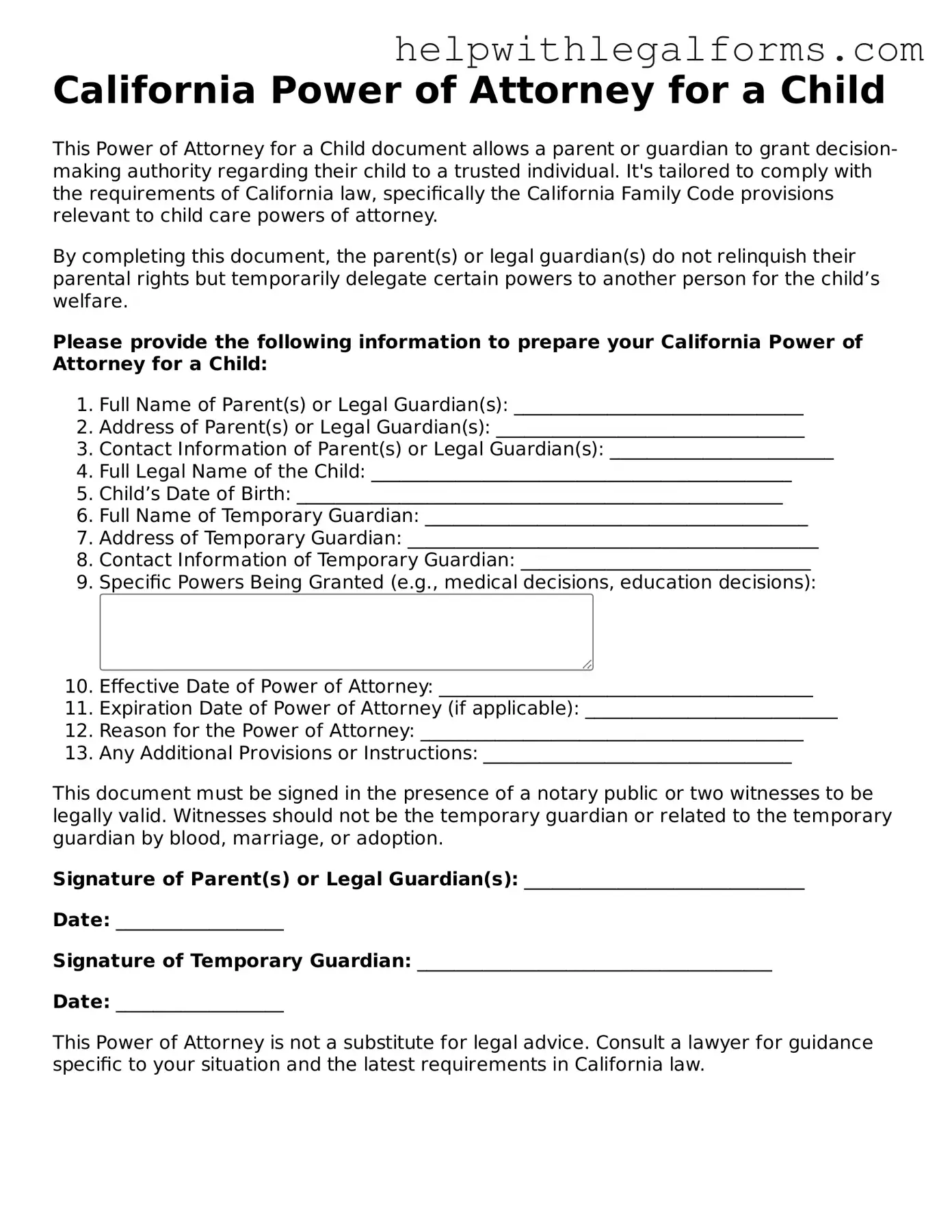What is a California Power of Attorney for a Child form?
This form is a legal document that allows parents or guardians to grant another adult the authority to make decisions for their child in their absence. This could include decisions about medical care, education, and general welfare. The form must comply with California state laws to be considered valid.
Who can serve as an agent under a California Power of Attorney for a Child?
Any competent adult, such as a family member or close friend, whom the parent or guardian trusts, can serve as an agent. It is crucial that the chosen agent is someone who understands the responsibilities involved and is willing to act in the best interest of the child.
How long does a Power of Attorney for a Child last in California?
In California, a Power of Attorney for a Child typically lasts for a maximum of 12 months from the date it becomes effective. Parents or guardians can specify a shorter duration if they wish. To extend the arrangement, a new form must be completed and signed once the initial term expires.
Do I need a lawyer to create a Power of Attorney for a Child in California?
While it is not legally required to have a lawyer to create this form, consulting with a legal professional can help ensure that the document is properly executed in alignment with California state laws. A lawyer can also provide advice tailored to your specific situation.
How do I revoke a Power of Attorney for a Child in California?
A Power of Attorney for a Child can be revoked at any time by the parent or guardian who granted it. This requires notifying the agent in writing of the revocation and retrieving all copies of the power of attorney document. It is also recommended to inform any institutions or individuals that might have relied on the document of its revocation.
Is a California Power of Attorney for a Child recognized in other states?
While many states have laws recognizing out-of-state power of attorney documents, there might be specific requirements or limitations. It's advised to check the laws of the state in question or consult with a legal professional to ensure the document will be recognized outside California.
Can a Power of Attorney for a Child be used to give an agent the ability to make all decisions for a child?
No, the scope of the authority granted by a Power of Attorney for a Child is limited to what is specified in the document. It cannot be used to transfer parental rights completely. Parents or guardians cannot delegate their entire legal authority or responsibilities over a child. The document can specify which decisions the agent can make, allowing the parent or guardian to retain control over other aspects of their child’s life.
